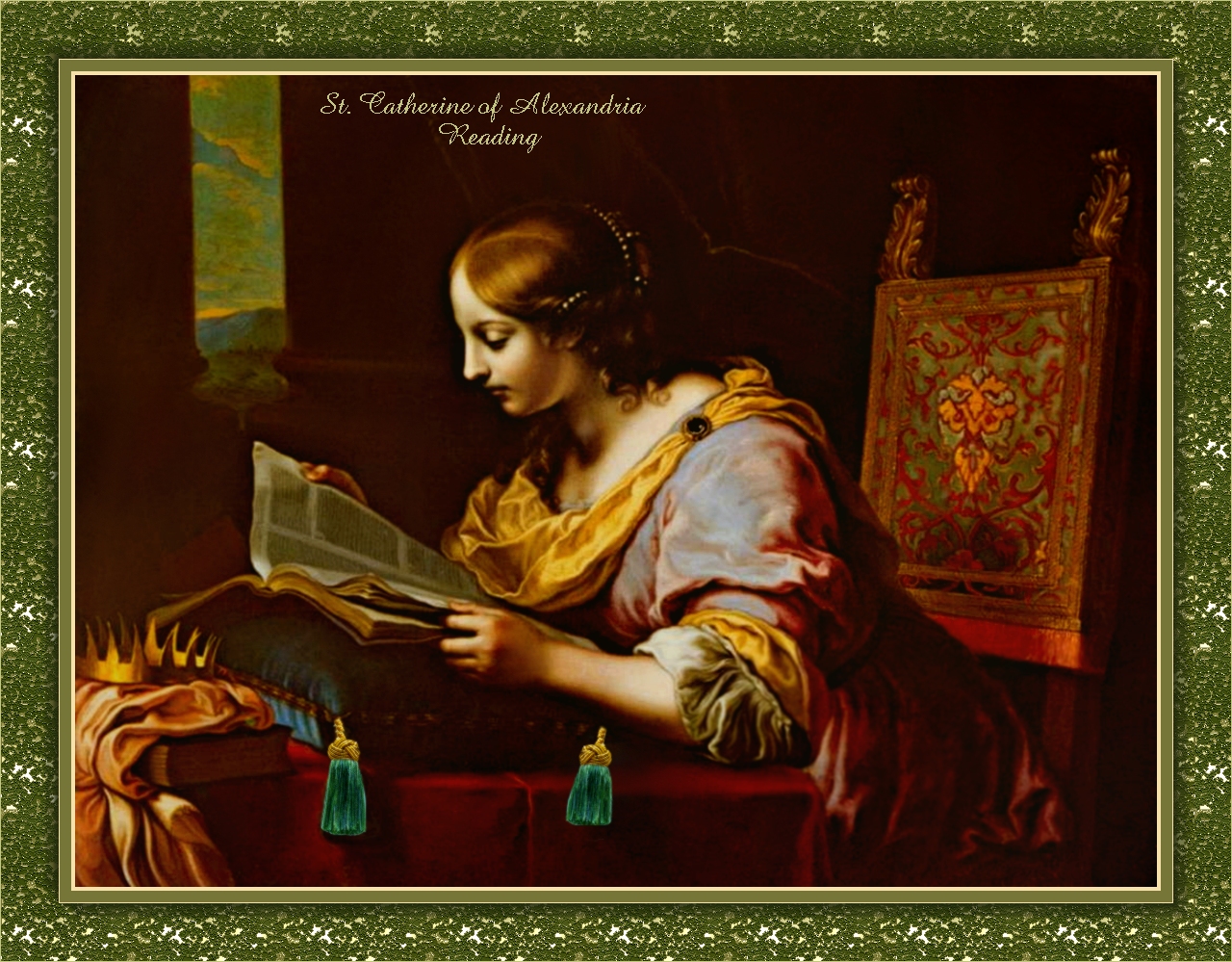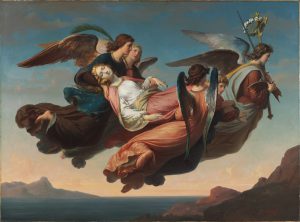
St. Catherine of Alexandria was one of the virgin martyrs of the early Church. We know of her primarily from the writings of the early Church historian and Bishop of Caesarea, Eusebius, who wrote in the early fourth century. Catherine was born c. 287 at Alexandria, Egypt. At this time, Alexandria was a great city, located at the mouth of the Nile River. It was renowned throughout history as a center of great learning. The Evangelist St. Mark is reputed to have established a great catechetical school there.
A VERY BRIGHT STUDENT
Catherine was born to a noble family and she was highly educated and a keen student. When she was about fourteen, she experienced a vision of the Virgin Mary with the Christ Child. Having already studied the teachings of Christianity, she became Christian, and continued her studies.
When the Emperor Maxentius began a widespread persecution of Christians in the early fourth century, Catherine was young, brilliant, and beautiful. In c. 310, she boldly went before him and denounced his cruelty. The two had a debate of sorts, where Catherine denounced the pagan gods and gave an explanation for the logic of her Christian faith. Maxentius was aggravated that he could not best her arguments, so he summoned fifty of his philosophers in an attempt to confound her.
HER BRILLIANCE SHINES
Instead of making her look foolish, they were won over by her explanation of the truths of the Faith, and converted. The infuriated emperor had the converted philosophers all put to death. He then offered Catherine a role as his wife or consort, which she refused. Maxentius had her arrested, beaten, and imprisoned. When he was away, Catherine was visited in prison by his wife and a high ranking officer, who were also converted to Christianity, along with several of Catherine’s guards.
THE CROWN OF MARTYRDOM

Maxentius, enraged when he learned of this, ordered Catherine to be put to death on a spiked “breaking wheel”, a device used for torture by the breaking of the victim’s bones. Catherine’s cords attaching her to the wheel were miraculously undone, and the wheel itself shattered. Determined to be rid of her, Maxentius then had Catherine beheaded. Legend has it that Catherine’s body was mysteriously transported by angels to Mount Sinai, the site of extraordinary divine manifestations in the Old Testament. In the year 527, Emperor Justinian had a great walled monastery built on Mount Sinai, bearing her name and under her patronage. It still exists, and is one of the oldest in the world.

CATHERINE’S LEGACY
St. Catherine of Alexandria has been highly venerated in both the Eastern and Latin Churches since about the tenth century. She is listed among the Fourteen Holy Helpers, a group of early saints whose intercession is believed to be especially effective. She is usually called upon for protection from a sudden death. She was named by St. Joan of Arc in the fifteenth century as one of the heavenly voices who guided her in her mission. Later, when the Roman liturgical calendar was changed, her feast was struck off because “reformers” didn’t think she existed, even though St. Dominic, the founder of the Dominican order, also claimed to have had an apparition of St. Catherine with the Virgin Mary. St. Catherine is the patroness of unmarried young women, apologists, philosophers, theologians, preachers and wheelwrights. Her feast day is November 25.
